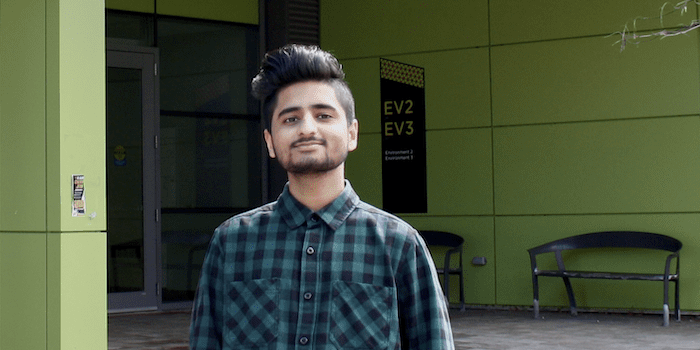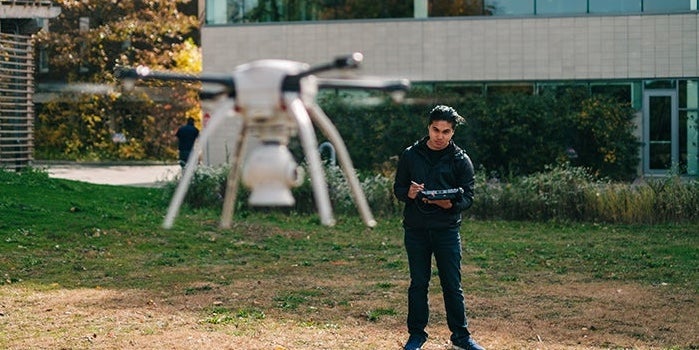
Stories by and about the people in the Faculty of Environment.

Finding your place – and making the world a better one
In the first month of university, a mysterious green poster caught Michelle’s eye. Discover how a poster helped Michelle find her place in the Faculty of Environment.

C-suite sustainability
Growing up around the oil industry, Okeoghene witnessed first-hand the relationship between business and the environment. Creating a sustainable future, she quickly discovered, is as much about protecting natural resources as it is fostering a competitive business landscape.

Navigating urban planning with community at heart
Meet Hafeez, a Planning student in the Faculty of Environment and a passionate advocate for road safety, better transit, and complete communities. Learn about his efforts in the community and experience as a Waterloo student.

A map to your future: Geomatics at Waterloo
Aujas remembers researching the Geomatics program as a high school student and knowing it was for him. “I was thrilled to see geography and computer science — two things I like — in the same program."

Drone driver
Pedro put his skills to work through co-op—helping York Region map out its fibre-optic network. It was a chance to apply what he was learning and get a feel for the kind of work he might want to do after graduating from Geography.

Overwhelmed by climate change? Start here.
For many of us, tackling climate change on an individual level feels daunting: Where do I start? What could I even do to make a difference?
More articles
Want more Missing Manual content?
All Missing Manual categories

Applying to university
Finding a university program you'll love. Plus tips for applying to university.

High school success
Making the most of your high school experience from students who know what it takes.





